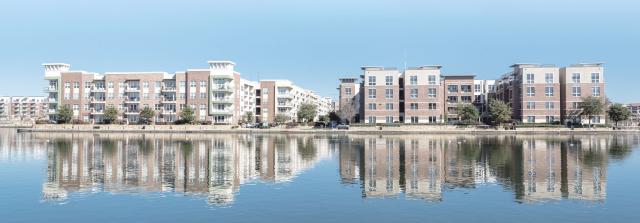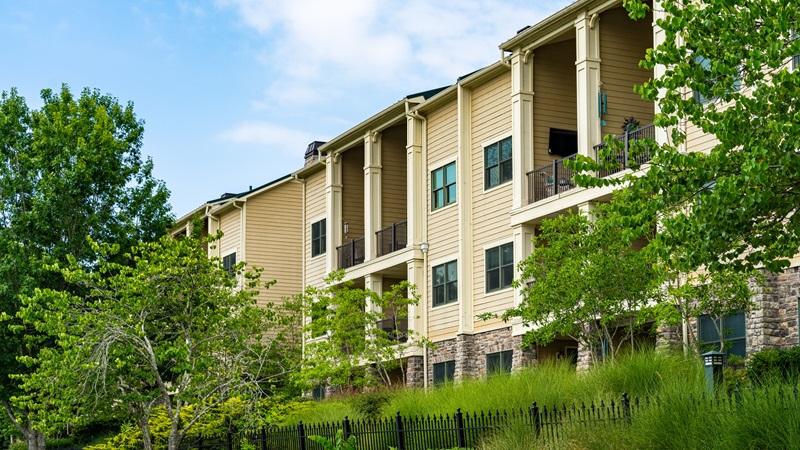
Why go green? Not only can sustainability practices help support the planet, an environmentally friendly approach to multifamily can also conserve resources, cut costs, and attract new residents.
Sustainability is a growing expectation among today’s renters. Nearly 60 percent of respondents in a recent survey by the National Multifamily Housing Council said building and sustainability certification would positively influence their rental leasing decision, while 62 percent said so for a Healthy Building certification.
But certification isn’t the only way to show your green credentials. From energy-efficient appliances to solar panels, there are dozens of ways multifamily owners and operators can increase their commitment to sustainability. Check out the list to explore the options that best fit your community needs.
1. Promote paperless payment

Even in a digital world, many renters still prefer to pay rent by check, cash, or money order. Compared to electronic payments, these methods have a significantly higher environmental footprint, because they can require paper, mailing, and transportation. Besides these environmental considerations, non-electronic payment methods are also faster to deposit funds, easier for busy onsite staff to process, and more secure.
If any of your residents are still paying via traditional methods, encourage them to switch over to automated electronic payments, such through an ACF transfer or online bill pay. To make the transition as smooth as possible, offer clear step-by-step instructions, get new residents signed up during the onboarding process, and educate current residents on what’s in it for them. Advantages include convenience, security, and the peace of mind that comes from knowing their payments will be made on time — no late fees!
Meanwhile, if your community provides payment reminders or late notices by mail, encourage residents to switch over to email notifications.
2. Offer onsite recycling
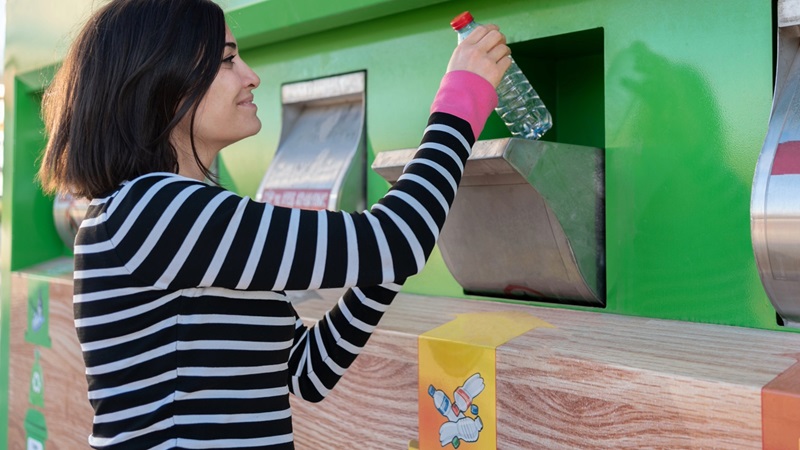
Did you know that multifamily communities are far less likely than single-family households to recycle their waste? While single-family households recycle 68 percent of their waste, multifamily communities recycle only about 20 percent, according to stats provided by the National Apartment Association. One key reason for the discrepancy is that many apartment communities simply don’t sign up for recycling services in their waste management contract.
The additional costs of recycling may seem daunting, but by redirecting waste, an effective recycling program can reduce the volume and costs of garbage pickup. And it can also help attract and retain residents. An overwhelming 93 percent of North Americans consider recycling to be important, according to a worldwide survey (PDF) conducted in 2021 by the World Economic Forum, SAP and Qualtrics. The top barrier cited by participants? Lack of services to enable recycling.
Check with your local municipality about the local recycling and waste options. In addition to recycling, some areas may even offer pickup for green waste or food scraps.
And as a growing number of states and municipalities adopt “zero waste” policies, apartment communities may be mandated to offer recycling, so it’s worth planning your recycling strategy now.
3. Promote power strips

Did you know that appliances that stay plugged in when not in use can draw as much as 5 to 10 percent of residential electrical use? From TVs and computers to toasters and blenders, these appliances continuously draw small amounts of power that can really add up, according to the Berkeley Lab.
But some simple steps can reduce standby power, also known as phantom or vampire power. Encourage your residents and onsite staff to unplug appliances that are only used infrequently and to use power strips to easily switch off multiple devices, such as computers and printers, when not in use.
To make it easier, include a power strip in your resident move-in kit, or sell them to residents at a discount, along with other energy-saving products.
4. Create a community garden

One unique amenity that can help your property stand out is a community garden. Multifamily gardens reflect a commitment to green living and can help attract a range of residents, from environmentally conscious Gen Z renters to empty nesters used to having a backyard garden. A garden can also serve as a community space, bringing neighbors together and boosting resident retention.
While startup costs for creating a multifamily community garden can range from $5,000 to $30,000, according to MultifamilyBiz, the initial investment can pay off. Urban gardens and rooftop green spaces can raise the profile of your community, and these amenities typically attract higher income residents. When you charge residents small fees for plot use and equipment rental, you can easily cover ongoing expenses.
What are the environment benefits of a community garden? A garden can support onsite food production, support local pollinators like butterflies and bees, and reduce waste by converting food scraps into valuable compost. Green spaces can also reduce runoff, absorb carbon in the atmosphere, and alleviate urban heat.
5. Be smart about lighting
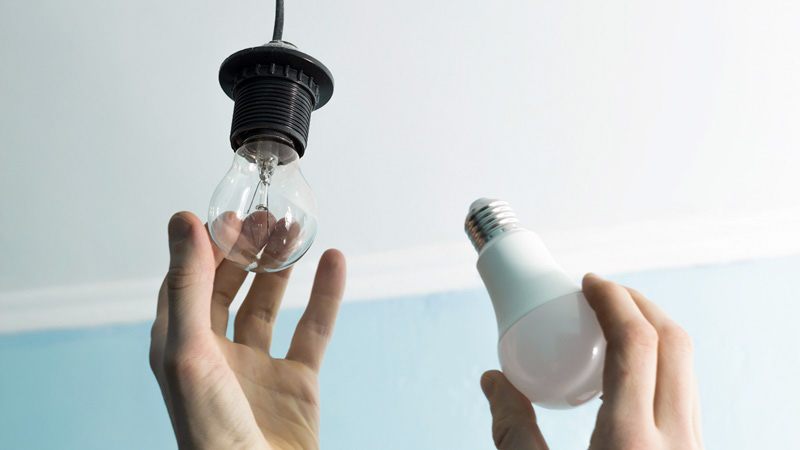
How green is your lighting? To reduce your community’s environment footprint — and utility bills — try these tricks:
- Switch to LED bulbs. Compared to a traditional incandescent bulb, the energy-efficient LED bulb, which stands for light-emitting diode, uses less electricity and can last 25 to 50 times longer. And unlike energy-efficient compact fluorescent light bulbs, LEDs don’t contain mercury. Although recent federal regulations have banned both production and sale of traditional bulbs, many buildings continue to have these bulbs installed or in storage, from before the new rules went into effect.
- Make use of natural light. In winter, opening blinds and curtains during the day can help let in sunlight and can help reduce lighting needs. During the summer, however, closing shades and blinds during the hottest parts of the day can help cool indoor spaces, reducing the need for air conditioning.
- Automate. Timers and motion-sensors in common areas can help ensure lights are only on when needed. And smart lighting systems with app-based controls can provide useful data on usage trends and can help reduce consumption.
- Dispose of old bulbs safely. What should you do with old light bulbs? While some light bulbs can be safely tossed into the trash, others have specific requirements for safe disposal to avoid mercury contamination. Ensure your community follows local and federal requirements for disposal, and educate your residents about how to safely get rid of these products.
6. Install energy-efficient appliances

Appliances that earn the ENERGY STAR label meet strict energy efficiency specifications set by the U.S. Department of Energy and Environmental Protection Agency. These appliances use less energy and can reduce your community’s electricity costs.
For example, an ENERGY STAR fridge can save about $230 over the 12-year lifetime of the product, according to the government program. For multifamily communities with dozens or hundreds of units, that number that can translate to thousands of dollars in savings.
And to expand your savings further, check with your local power company, municipality, or state. Many places offer significant rebates to multifamily communities that meet certain energy requirements, such as using efficient appliances.
7. Go digital for resident communications

Cut down on paper use by opting for electronic in your resident communications. Instead of using posters and flyers to post announcements, consider installing a low-energy digital display in your lobby. Share community updates through an email newsletter. And encourage residents to choose email as their preferred method for notices and reminders.
8. Choose to reuse
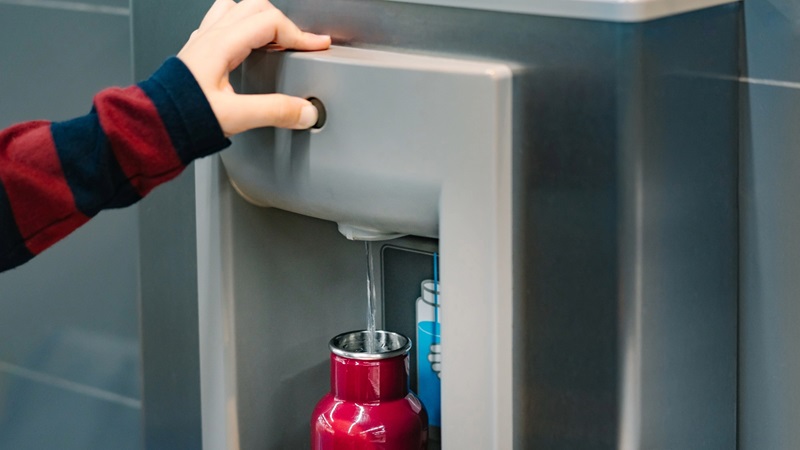
Reduce waste with reusable products. If you have a coffee machine, encourage residents to bring their own mugs and tumblers instead of opting for paper or Styrofoam cups. Set up a water bottle refilling station in common areas like your lobby or fitness center to promote reusable water bottles over one-use plastic bottles.
9. Use low- or no-VOC paint
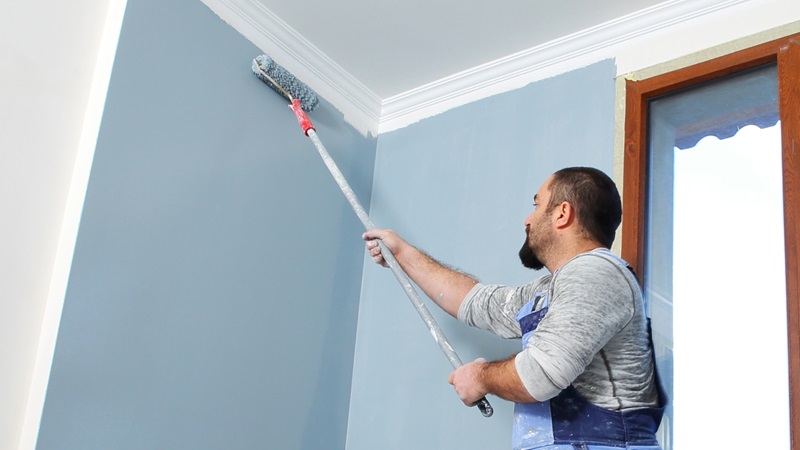
Often found in paint and other materials, volatile organic compounds (VOCs) are a group of often toxic chemicals that have high vapor pressure and low water solubility. This means that these pollutants can easily evaporate, and they can pose short- and long-term health risks for humans, pets, and the environment, with common symptoms including nausea, dizziness, and asthma attacks.
When repainting interior and exterior spaces, protect the health of your residents and employees with low- or no-VOC paints. These paints typically have little to no smell. Paints classified as “zero VOC” contain 5 or fewer grams per liter. Although what is labeled “low VOC” can vary by brand, look for flat paints that contain less than 50 grams per liter and satin, semi-gloss, and gloss paints with less than 100 grams, according to the Family Handman magazine.
But even though low- and no-VOC paints carry a lower health risk, it’s still important to follow safety protocols. Always ventilate properly while painting, and ensure sufficient time for paint to dry before opening an apartment or community space to residents or employees.
10. Offer bike racks on site
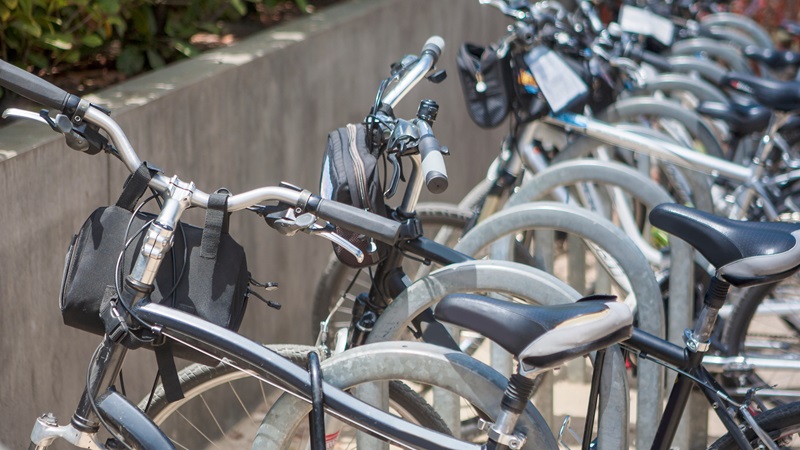
Promote sustainability and a healthy lifestyle through biking. Install a bike rack to let residents easily store their bicycles on site — or go a step further and set up a bike exchange program where residents can rent a bike for a daily or hourly fee.
11. Promote public transit

Is your community near any bus lines or train stations? For nearly three in 10 renters, nearby transit is must-have, according to a recent Apartments.com survey.
Highlight the mass transit options to current and future residents. When advertising your property, include walking or driving distances from the nearest bus stop, commuter rail, or ferry or tram options. For current residents, keep the local bus routes and schedules posted in your common areas.
12. Consider tankless water heaters
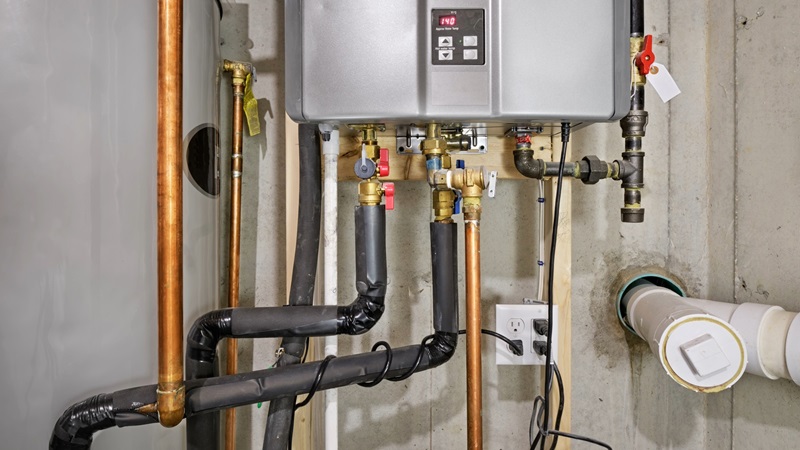
Compared to traditional water heaters, tankless water heaters can offer significant energy savings. These water heaters, also known as instantaneous or on-demand water heaters, only heat water when needed, instead of continuously maintaining a supply of unused hot water in a storage tank.
By avoiding unnecessary heating, tankless water heaters can reduce energy bills, and they score higher than gas tanks on the U.S. Energy Department standard for energy efficiency. They also save space, occupying anywhere from 40 to 60 percent less space than traditional units. Because they heat water on demand, they can avoid the capacity problem that occurs in apartment buildings when resident demand for hot water during peak hours exceeds a tank’s supply of hot water.
Although they cost more than traditional units upfront, they last five to 10 years longer, and the savings in energy efficiency can help offset the cost.
13. Provide EV charging stations
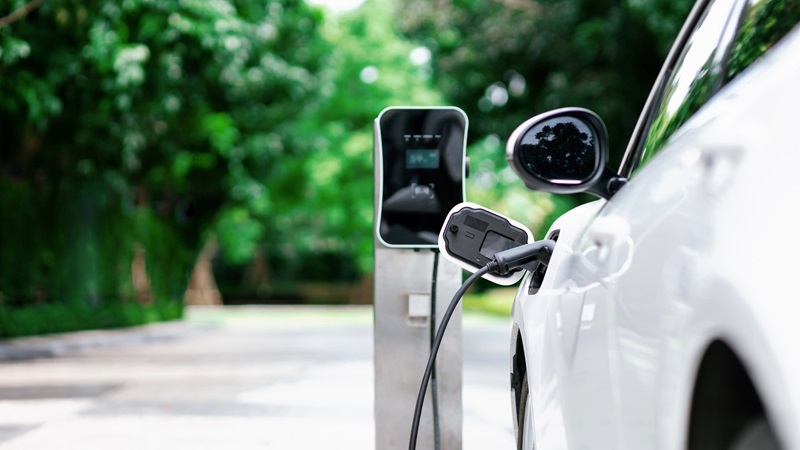
As a growing number of renters choose an electric vehicle, an onsite EV charging station can help set your property apart from the competition. Electric car sales outpaced all other segments of the auto industry in 2022, according to Kelley Blue Book, and 47 percent of renters are planning or considering a fully electric or plug-in hybrid for their next vehicle purchase, according to the 2024 National Report by the National Multifamily Housing Council.
14. Invest in solar panels

Does your building receive at least four hours of direct sunlight a day? You might be a good candidate for solar panels.
Though pricy upfront, this installation can significantly cut down on your utility costs — and it can be a selling point to attract environmentally-friendly residents.
And don’t forget to check out the tax benefits of installing a solar energy system, including the federal tax credit and any rebates and grants that might be available in your state, county, or city.
15. Regularly maintain your water heaters and HVAC system
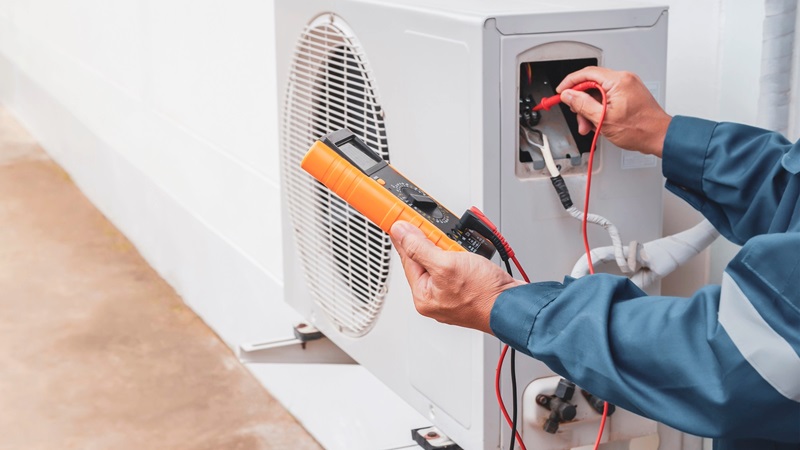
Regular maintenance of water heaters and HVAC systems can increase energy efficiency and extend the lifespan of these appliances.
Regular tests and tune-ups can catch problems like wear and tear, loose or faulty electrical connections, drainage issues, motor functionality, insufficient refrigerant, and leaks.
As part of standard maintenance, HVAC air filters should be changed on a regular basis — anywhere from every month to twice a year, depending on the filter type — and water heaters should be flushed twice a year to eliminate sediment.
16. Try xeric and native landscaping
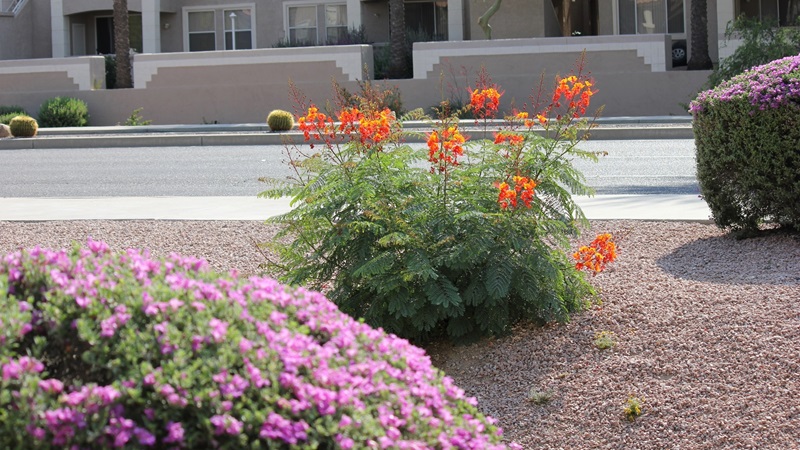
Plan your landscaping with water usage in mind. If you live in an area prone to drought, consider swapping out lawns for low-water alternatives, also known as xeric (low water) landscaping. This sustainable approach can reduce your water needs and labor costs.
Even in areas with plentiful rainfall, a conscious approach to landscaping can conserve resources and lessen your environmental impact. Since they’re adapted to your local environment, native plants typically require much less upkeep and irrigation than other options. Not only does this cut your costs, it can also support the local ecosystem and protect pollinators that rely on these plants.
17. Use low-flow faucets and showerheads
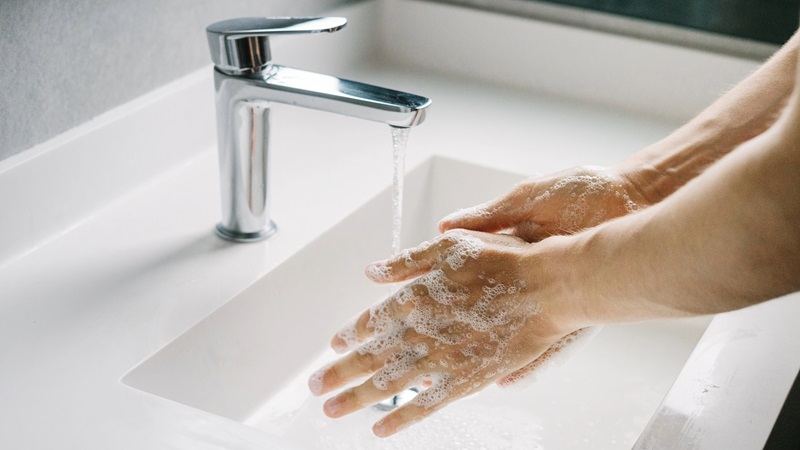
Reduce residents’ water usage by installing low-flow faucets and showerheads. These products are designed to provide sufficient water pressure with less water, which can bring down utility costs.
18. Install ceiling fans

By circulating air more effectively, the humble ceiling fan can make residents feel cooler, reducing the need for air conditioning by as much as 4 degrees. And it’s not just useful for summer heat. When you change the direction of air flow for winter, ceiling fans can help push down warm air, reducing heating costs as well. To lower your heating and cooling costs, install ceiling fans in all your units, and instruct residents on how to use them effectively.
19. Offer smart tech
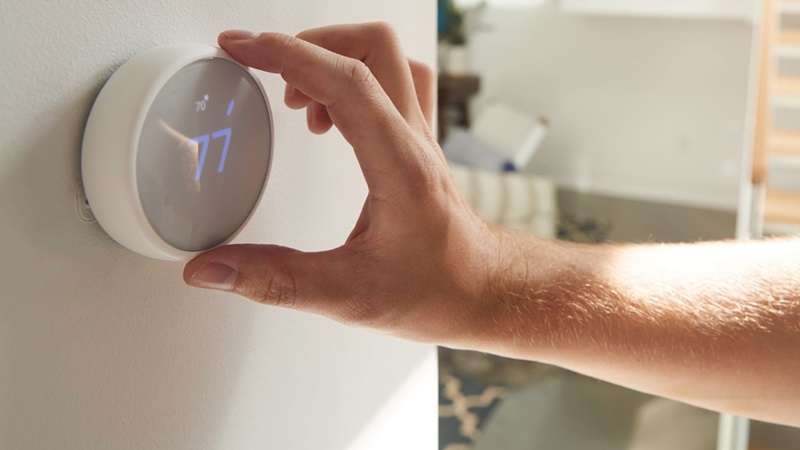
Smart tech can make it easier to reduce energy use and save costs, through automated adjustments based on usage trends or preprogrammed settings.
For example, smart thermostats can automatically turn temperatures up or down at different times of day, when residents are away, or even based on the weather.
And smart tech is in demand among renters. When asked what they would find important in a tech amenity package, a majority of renters selected smart technology as important, according to the 2024 NMHC survey:
- Smart locks for their apartment: 81 percent
- Smart thermostat: 79 percent
- Smart appliances: 70 percent
- Smart lights: 67 percent
20. Consider community composting
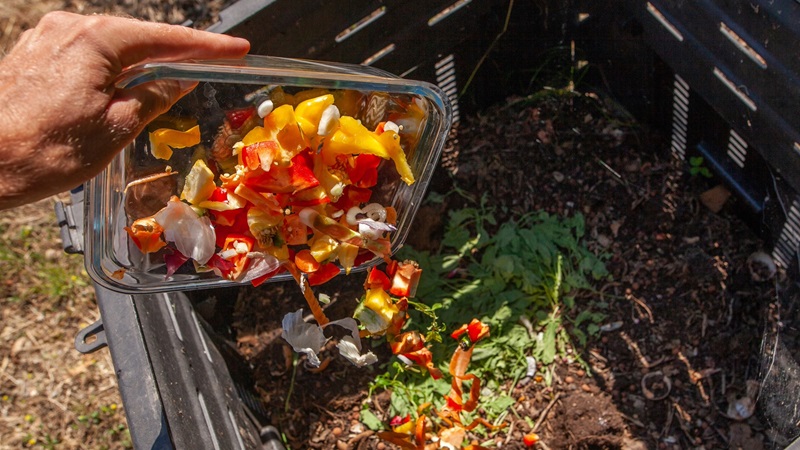
Anywhere from 20 to 30 percent of what Americans throw away could be composted, according to the Environmental Protection Agency. Not only does composting reduce the amount of garbage that’s thrown away, it also can turn food scraps and yard waste into valuable topsoil that you can use for your landscaping needs or in a community garden.
Multifamily communities are uniquely positioned to take advantage of composting, thanks to their size and centralized nature. In some areas, organic waste pickup may be offered alongside garbage disposal and recycling services — a convenient way to reduce your garbage volume. But if you choose to offer composting on site, you can also reap the benefits of the compost produced.
To get started, you’ll need to select the type of composting that works best for you. Popular options include aerated static piles, worm bins, tumblers, and the three-bin system.
Then, set up a collection bin. This can be as small as a pail or as large as a cart, depending on your composting approach and community size. Work with your residents to solicit food waste and educate them on which items should and shouldn’t be composted.
For more resources, check out Global Green’s multifamily guide to compost (PDF).
21. Maintain apartments with weatherstripping
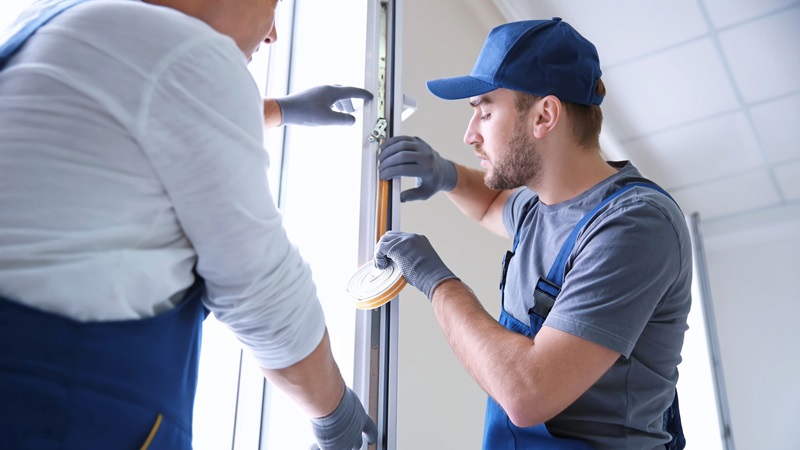
By sealing air leaks around doors, windows, and other building components, weatherstripping is a simple way to improve insulation and lower energy costs. From tape and felt to reinforced foam and door sweeps, there are many options to choose from to meet the needs of your building and climate.
22. Install high-quality windows
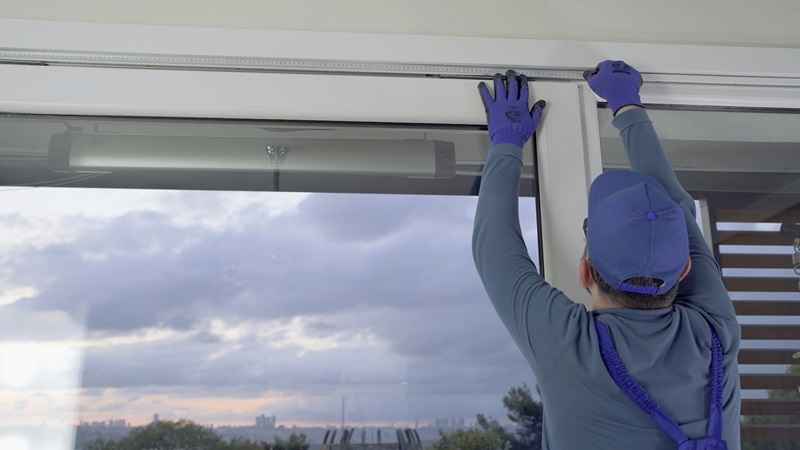
Did you know that 25 to 30 percent of heat is lost through leaky windows, according to the Department of Energy? This loss can drive up heating costs. And the reverse is true in summer. Poor-quality windows are responsible for just as much heat gain, which translates into higher air conditioning expenses.
By choosing quality materials for your windows and replacing them when needed, you can reduce the heating and cooling costs needed for your units.
A sustainable focus year round
Although Earth Day is the perfect time to highlight your community’s commitment to sustainability, a focus on conservation can help you save energy, cut costs, and attract renters throughout the year.







